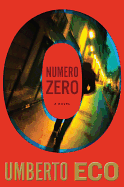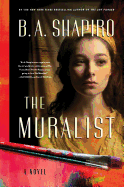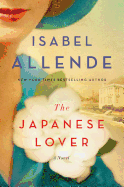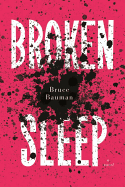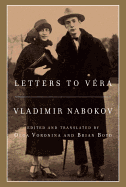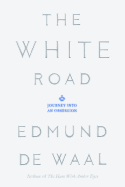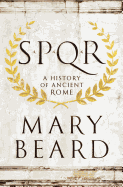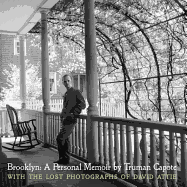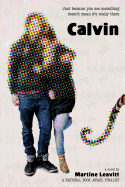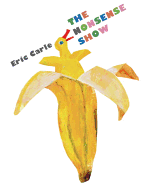_Robin_Cormack_crop.JPG) |
| photo: Robin Cormack |
Mary Beard is a professor of Classics at the University of Cambridge, classics columnist for the TLS, and a popular blogger and television presenter. She is the author of many books, including Confronting the Classics: Traditions, Adventures and Innovations. Her new book is S.P.Q.R.: A History of Ancient Rome (see our review below), a sweeping history covering Rome from its mythical foundation in 753 BCE to the Edict of Caracalla in 212 CE, which granted citizenship to all free men living within the Roman Empire. S.P.Q.R. is a Latin acronym for Senatus Populusque Romanus, or "The Senate and People of Rome."
You've been writing for a long time about specific aspects of ancient Roman history. What prompted you to write a general history of ancient Rome?
To be absolutely personal about that, I've been teaching Roman history now for about 40 years. Over that time, you teach different bits of it--you teach different people at different levels and gradually build up a sense that you've got something to say about Roman history. You have a point of view. You get a line on it. To be very frank, if you're going to write a big history of ancient Rome, you can't do it when you're very young because you don't know the stuff. And if you get to be 59 or 60, you have to do it now. Otherwise, you might not live to do it. In a sense, I think that it was a quintessentially but proudly middle-aged project.
You write that you no longer believe we have a lot to learn directly from the Romans, but by engaging with the history of the Romans we can learn a great deal. Can you explain that distinction?
I don't mean that Roman history is not worth doing; otherwise I would have just wasted my life. What I mean is I think there's a tendency for people, particularly classicists, often when they want to justify the study of Roman history and money being put into it, they tend to look at Roman history and say "we can learn from the Romans." I don't think there are actually direct lessons to be learned.
You know, it's no good looking at the problems that Cicero had in 63 BCE effectively about terrorism and say "we can learn from him" either by doing what he did or not doing what he did. I think that where Roman history is very good is in a way at the next level up. By thinking about those issues--and of course we share many, many problems and debates about how to run a human community with the Romans--I think that they make us more sensitive about our own problems. They make us see our politics and our culture and our certainties in a different light and they help us get different perspectives.
So, in that sense, I think that's a learning experience but I don't think--to put a very crude example--the fact that Roman legions had trouble in Iraq was a good reason for us not going into Iraq. There were many, many reasons for us not to go into Iraq; it wasn't anything to do with the Roman experience. It's a very popular journalistic subject whenever a kind of issue that can be paralleled in Rome pops up to ring up your favorite classicist and say "tell us how the Romans would do here!" I think the Romans can teach us how to think harder; I don't think they can tell us what to do.
Do you ever miss what might be called "old-school history" where writers such as Edward Gibbons could proclaim "this is how it was?" Do you ever miss that kind of certainty?
I think inevitably you feel a little ambivalent about it. I mean, parts of me get quite angry at it or at least feel very alienated from it. "Come on guys, you don't know!" On the other hand, I think you have a sneaking admiration for the certainty and the claims to command and the claims to knowledge, although it's something I could never honestly do myself. I think my book would have been less interesting if I had simply disdained that kind of history. I feel very suspicious of it, I don't want to do it myself, but I can see its appeal.
I thought about this the hardest in regard to all the stories of wickedness, sadism and immorality that surround the Roman emperors because there are all kinds of reasons that I think those are likely to be more fiction than people want to realize. On the other hand, I think that even in Roman terms, they're very important fictions; they're very important political fictions. But also I think that one doesn't want to remove from people the fun and engagement of those stories, you know: Nero fiddling while Rome burned, Domitian murdering flies. You don't want to have to say to people "you just have to forget those, that's not Roman history," because I think that's removing something that is a part of Roman history even if it isn't true.
And not all history is true, history is also about what people said later, how they elaborated, what kinds of whopping lies they chose to tell. So you want to give people a way of enjoying some of that traditional Roman narrative while also being able to stand outside it and see what it might be doing. And I think that's a bit like what you're saying with Gibbon and traditional history. You know, one of the excitements of Roman history is that so many people have had a go at it. I think it would be appallingly arrogant if I just said we're chucking this out and starting again. And I think it wouldn't be fair on the readers.
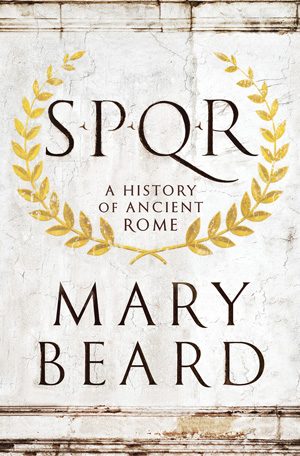 You write a lot about Roman origin myths, which you argue give some clues as to how the Romans conceived of themselves. In the U.S., stories about our founders are almost deifying, but Roman origin myths such as Romulus and Remus and the Rape of the Sabines are entirely different.
You write a lot about Roman origin myths, which you argue give some clues as to how the Romans conceived of themselves. In the U.S., stories about our founders are almost deifying, but Roman origin myths such as Romulus and Remus and the Rape of the Sabines are entirely different.
Even Aeneas, in another origin myth, at the end of the Aeneid brutally murders somebody who's surrendered to him and it's horrible. Overall what I was wanting to do was to say that the fact that these stories are not true--they're not bloody true, they are myths, but that doesn't mean that they don't have a hugely important historical point in helping us think about how the Romans debated who they were. Britain is rather short of foundation myths--we have a bit of King Arthur and a bit of King Alfred--but I think it is quite interesting that U.S. foundation stories, let's call them, are usually hero-izing.
These are not hero-izing. This is one of the things that is particularly interesting to me about Rome: there is a sense of Rome actually looking at it itself quite dispassionately in these stories. You know, what is it like to be a city that is built on fratricide and rape and desertion and brutality. They aren't glorifying myths. Roman writers aren't saying Romulus killed Remus and that's a jolly good thing. They worried about it so they create stories to worry about, just like they worried about the Rape of the Sabines.
I suppose there's a tendency where, particularly since the late 18th century, the onward rise of Hellenism has somehow placed the Romans as rather thuggish creatures who built roads and invented concrete but were not thinkers. If you want the thinkers of the ancient world, you pop off to Greece and you find the Athenians and they're the intellectuals of antiquity. But I think we've just been very bad at seeing where and in what context the Romans did raise all those awkward issues about themselves, and often it's in those stories that they tell about their early history or what we would call myth. How you would negotiate what Rome is, what its problems are, how to run a community--all big questions, you know? Is all marriage rape? These are big questions.
When you read Roman writing, how do you tell when the author isn't being truthful? Do you look at archeology and other accounts and see how and why this person would use this situation to their own advantage?
I don't think there's a magic bullet there. I don't think there's a magic bullet that historians can teach somebody or that historians have a unique access to. I think that a basic rule of thumb of looking at all history is to say "what would the other side say here?" What would the other side look like? I think once one is accustomed and, in fact, thinks it's rather odd not to pose that question, then I think that the complexities open themselves up much more easily. I don't think that it's particularly difficult.
Another great thing about Roman history is that with a bit of help and a bit of opening up, I think everyone can enjoy it. I've spent a lot of my life hanging out in Pompeii with not much to do. And I've listened there for tour guides with their groups and I've listen to the kind of things they say and the kinds of questions that are asked and some of the tour guides are very good and some are not. But one thing that's become clear to me is almost all the questions that people have when they're inside a Roman bath building and they're looking around and they're trying to work out how it works, almost all the questions that the most amateur, uninformed people ask are good ones. You know, they say "so how did that work, then?" And it's very interesting because the good guide can take up those questions and run with them and the bad guides just shut people up. But it's always struck me that a lot of this is about having the confidence to say "that doesn't quite add up to me." "How come there's a door there?" And history's a bit like that: "Come on, that doesn't make sense to me." Follow your instincts, I try to say to people. --Hank Stephenson, bookseller, Flyleaf Books
Mary Beard: Wrestling with the Romans




_Robin_Cormack_crop.JPG)
 You write a lot about Roman origin myths, which you argue give some clues as to how the Romans conceived of themselves. In the U.S., stories about our founders are almost deifying, but Roman origin myths such as Romulus and Remus and the Rape of the Sabines are entirely different.
You write a lot about Roman origin myths, which you argue give some clues as to how the Romans conceived of themselves. In the U.S., stories about our founders are almost deifying, but Roman origin myths such as Romulus and Remus and the Rape of the Sabines are entirely different.